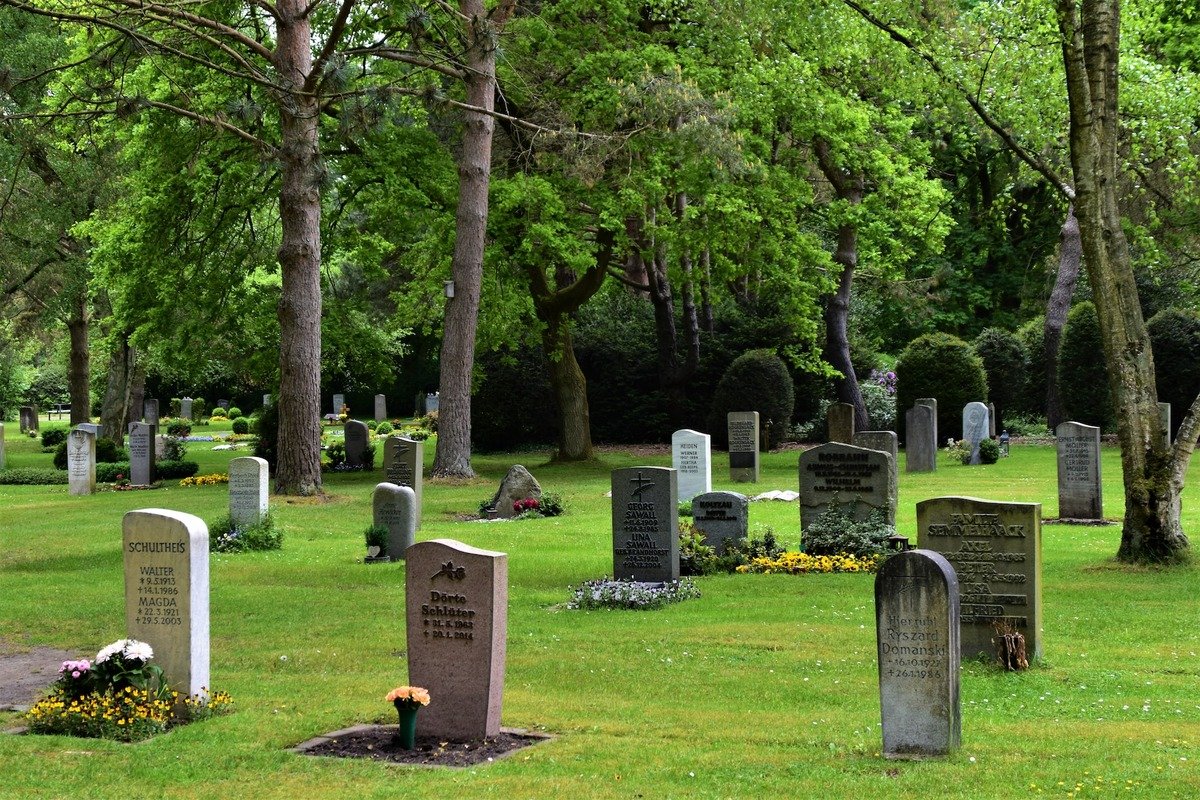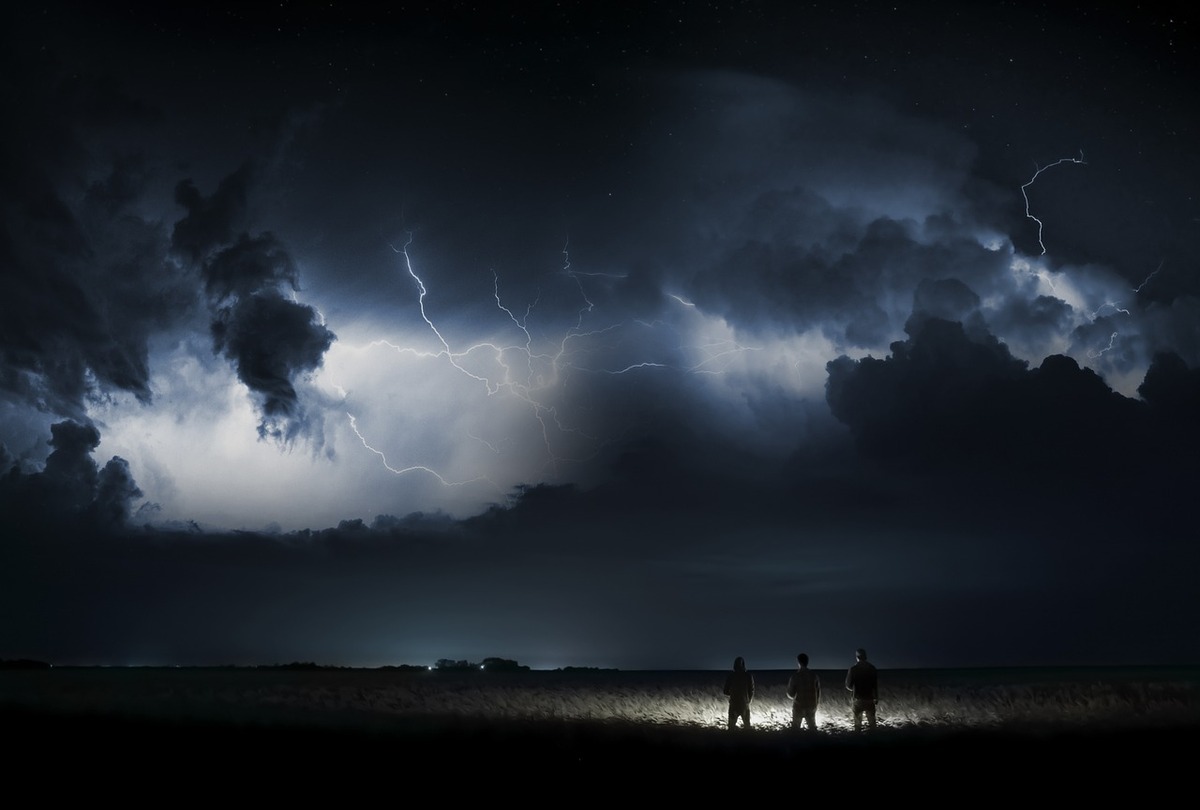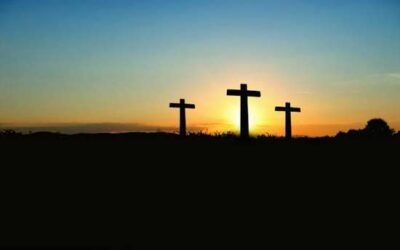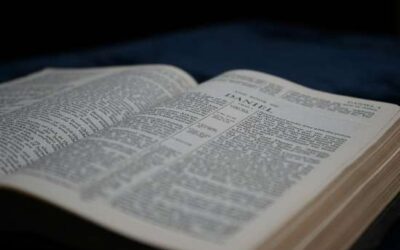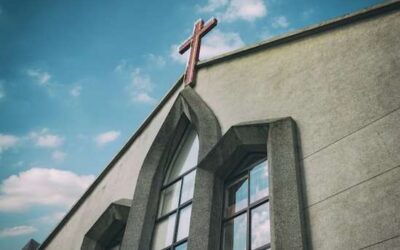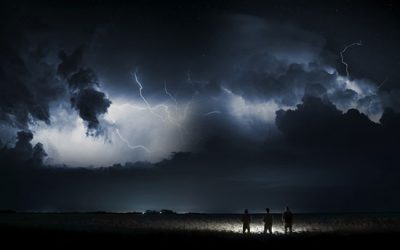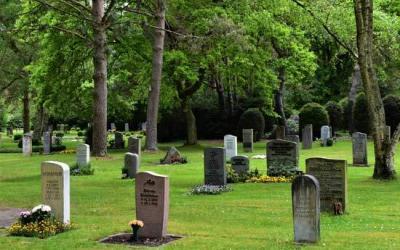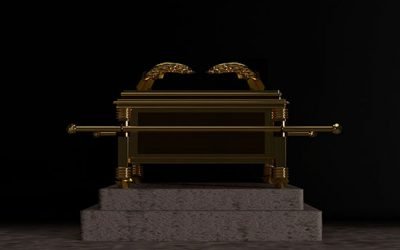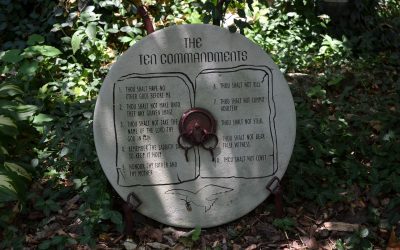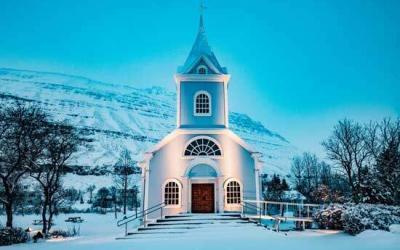When Adventists talk about “sanctuary doctrine,” they’re referring to the concept that the heavenly sanctuary reveals the plan of salvation—both in our personal walk with Jesus and in the work Jesus continually does as our intercessor in heaven.
The latter concept, known by Adventists as the Investigative Judgment or Pre-Advent Judgment, emerged from the earnest and diligent Bible study of early Advent believers who came out of the Millerite Movement. In the wake of the Great Disappointment of 1844, these Advent believers were looking for answers regarding Miller’s incorrect interpretation of the prophetic “cleansing of the sanctuary” mentioned in Daniel 8.
In their study, they learned that the services of the Israelites’ sanctuary were more than mere rituals. They pointed to the dual roles Jesus would perform as the lamb sacrificed for the sins of the world and as our High Priest and sole intercessor before God the Father.
Every Christian acknowledges Jesus’ role as the sacrificial lamb. But, as the sanctuary service requires both the sacrifice of the lamb and the intercession of a priest, it’s important we understand Jesus’ identity as our High Priest as well.
The Seventh-day Adventist Church believes our doctrine on the sanctuary helps shed light on this topic and what it has to do with the Investigative Judgment and the heavenly sanctuary.
Most importantly, it helps us understand the plan Jesus has, not just to forgive our sins but to restore and grow our relationship with Him.
Let’s unpack this doctrine and understand how it came about by delving into:
- What the sanctuary is
- What sanctuary doctrine is and how it developed in Adventism
- Whether sanctuary doctrine is unique to Adventism
- How the sanctuary doctrine is relevant today
But first, here’s a quick review of the sanctuary itself.
What is the sanctuary?

Photo by Kaushik Panchal on Unsplash
The original sanctuary, as described in Scripture, is God’s dwelling place in heaven (Exodus 15:17; Hebrews 8:2). It’s there that Jesus Christ intercedes on our behalf before God’s throne, or the fullness of God (Hebrews 7:25; 8:1-2).
Often, though, when we think of the sanctuary, we first think of the earthly structure God told the ancient Israelites to build in the Old Testament (Exodus 25:8). However, this structure was really just patterned after the true sanctuary in heaven (Exodus 25:9; Hebrews 8:5).
Instances of counterparts that point to each other exist throughout Scripture (Romans 5:12-15). They are referred to as a “type” and “antitype,” with the “type” being the counterpart that foreshadows, and the “antitype” being the counterpart that is foreshadowed.1
In this way, the earthly sanctuary is a type that points toward the antitype of the heavenly sanctuary.
It’s kind of like you and your shadow.
Your shadow isn’t really you, but it resembles you and points toward you. In this example, the shadow would be the type pointing to you, the originator or antitype.
Just like shadows, types are only a faint representation of the antitype. The fullness of the type can only be seen in the antitype. Similarly, our shadows provide a form and outline of what we are and what we look like. But who we truly are and what we truly look like can only be observed by seeing and interacting with us.
In the same way, while the Old Testament sanctuary offered the promise of salvation—which was symbolized through the slaughter of lambs and the intercession of mortal priests—the heavenly sanctuary involves the fulfillment of salvation through the death and intercession of Jesus, our High Priest, the Son of God (Hebrews 10:1-22; Hebrews 9:1-28).
What do these sanctuary models tell us about the plan of salvation?
They both tell us it involves:
1) The forgiveness of our sins: In the Old Testament sanctuary, lambs were sacrificed for the sins of Israel. In paying the wages of sin through the death of an innocent creature, they learned how God’s forgiveness works. This pointed to the way Jesus would die on the Cross and suffer sin’s ultimate consequence instead of us, so that we would have the opportunity to accept forgiveness and salvation (Hebrews 9:7-10, 22-23 ).
2) The restoration of our relationship with God: In the earthly sanctuary, the sanctuary process did not end with the sacrifice of the lamb. That’s only where it began. From there, the High Priest would continue to symbolically intercede for sinners by bringing the blood of the animal before God.
In the same way, because anything with any sin would not survive the presence of the fullness of God, Jesus goes before God the Father in the heavenly sanctuary to intercede for us. His life as a human and death as a sacrifice uniquely qualify Him to be our High Priest (Hebrews 9:7,12, 24-26; Hebrews 4:14-16). So, as Jesus’ sacrifice forgives our sins, His priestly ministry brings us back into communion with God, allowing us to build a relationship. Meanwhile, He is also sanctifying us, restoring our character to reflect His.2
In the four Gospel accounts in the New Testament, we can read about how Jesus fulfilled His role as the sacrificial lamb.
So when did He start His work as our High Priest?
Because the work of the earthly sanctuary points to the work of the heavenly sanctuary, we can find our answer by looking at the work of high priests in the Old Testament.
A brief overview of the ancient Israelite sanctuary
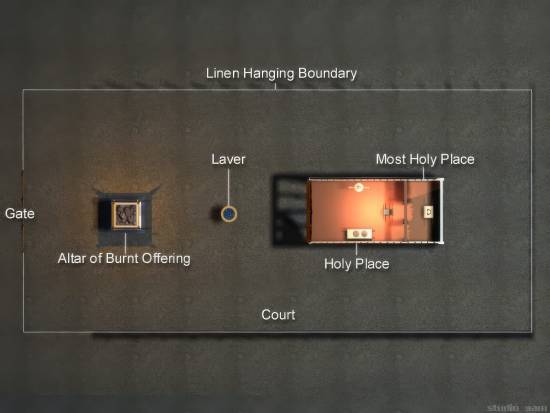 God directed Moses and the people of Israel to build a sanctuary in the wilderness, which became the basis for Solomon’s magnificent temple in Jerusalem (1 Kings 5-7). God had a couple of purposes in mind with this object lesson.
God directed Moses and the people of Israel to build a sanctuary in the wilderness, which became the basis for Solomon’s magnificent temple in Jerusalem (1 Kings 5-7). God had a couple of purposes in mind with this object lesson.
First and foremost, He wanted His people to be able to feel close to Him (Exodus 25:8). Sin separates us from God, but the sanctuary symbolizes how He removes that separation to be with us.
Second, He wanted to illustrate the plan of salvation.
The Israelites were spiritually “young” when the sanctuary model was given to them. During their slavery to the Egyptians, they lost a lot of the knowledge and practice of their faith. So even after they were liberated, they were slow to understand how God worked and were hesitant to trust in His care. Many of them doubted and disobeyed God at nearly every opportunity, but He was patient with them. He found ways to teach the Israelites on their level of understanding.
When they lacked trust, He taught them to depend on Him for “manna” to eat (Exodus 16). To emphasize that His law of love is unchanging, He wrote the Ten Commandments in stone (Exodus 20). To help them understand that He is always present, He gave them a physical representation of His presence by a cloud pillar during the day and a pillar of fire at night (Exodus 13:21-22).
In the same way, God taught the Israelites about the plan of salvation by example—through the services conducted at each section of the sanctuary.
The sanctuary had three different sections to it: the courtyard, the Holy Place, and the Most Holy Place.
In the courtyard, there was:
- The Altar of Burnt Offering: This was where the Israelites sacrificed animals to receive forgiveness for sins. This represents how sinners accept Jesus’ sacrifice for their sins to receive forgiveness.3
- The Laver: This was where priests would cleanse themselves after they had sprinkled the blood of the sacrificed animal. This was done to purify their bodies of sin, a symbolic act that prepared them to enter into the Holy Place. In the plan of salvation, this step represents baptism, as it is also a symbol of washing away the old, sinful life and receiving a new, pure one.4
Once the priests finished washing, they would enter the tent of the sanctuary, coming into an outer room known as the Holy Place.
In the Holy Place, there was:
- The Table of Shewbread: This was a table with 12 pieces of bread (symbolizing the 12 tribes of Israel) that the priest regularly replaced with fresh loaves. In the plan of salvation, this bread represents God and His word as what truly nourishes us (which is confirmed by Jesus Himself in Matthew 4:4).5
- The Lampstand: The priest also tended to this 7-pronged candelabra, keeping it lit at all times. The candles’ light represents the good Jesus can do through us, and the oil used to fuel the flame represents the Holy Spirit, who empowers us to do Christ’s work.6
- The Altar of Incense: This is where the priest would burn incense to the Lord to fill the sanctuary with sweet fragrance (Exodus 30:7-8). In the plan of salvation, this represents the way our prayers ascend to God (Revelation 5:8).7
All of these symbolize how we can grow closer to God, so the things in the Holy Place symbolically prepared the Old Testament priests to enter God’s presence in the Most Holy Place, which was separated from the Holy Place by a heavy curtain.
It contained only one article of furniture—The Ark of the Covenant, where God’s presence resided (Leviticus 16:1-2). This section of the sanctuary, though, was reserved for the high priest, who only entered there once a year during a feast called the Day of Atonement. On this day, the high priest made a special sacrifice on behalf of all the Israelites.
Why?
All through the year, the priests performed the daily sacrifices that represented Jesus’ sacrifice for us as the Lamb of God (Hebrews 9:6-7; John 1:29). They took the blood of the animal sacrifices, carried it into the Holy Place of the sanctuary, and sprinkled it there (Leviticus 4:35).
The result was a sanctuary full of sin.
It needed to be cleansed, and this was the purpose of the Day of Atonement. Here’s how Leviticus describes it:
“Atonement will be made for you on this day to cleanse you, and you will be clean from all your sins before the Lord…. The priest who is anointed and ordained to serve as high priest in place of his father will make atonement. He will put on the linen garments, the holy garments, and make atonement for the most holy place. He will make atonement for the tent of meeting and the altar and will make atonement for the priests and all the people of the assembly. This is to be a permanent statute for you, to make atonement for the Israelites once a year because of all their sins” (Leviticus 16:30, 32-34, CSB).
The high priest would carry the blood of a special sacrifice into the Most Holy Place and sprinkle the blood there. When he finished the ritual, the sanctuary and God’s people were symbolically clean of all sin.
Adventists believe that this event also points to another crucial event in Bible prophecy—the Investigative Judgment that Jesus performs in heaven as our High Priest before He returns in His Second Coming (more on this later). Like the earthly model, this judgment will result in a complete cleansing of the heavenly sanctuary so that Jesus can return and bring His followers to heaven (1 Timothy 2:3-5).
Let’s take a closer look at how these teachings developed in the Adventist Church.
What is the sanctuary doctrine, and how did it develop in Adventism?
As mentioned, the doctrine of the sanctuary sums up what the Bible tells us about how the earthly sanctuary mirrors the heavenly one within the plan of salvation. It helps us understand the investigative judgment that occurs before Jesus’ Second Coming by examining the prophetic significance of the Day of Atonement and Jesus’ role as High Priest.
This doctrine is foundational to the theology of the Seventh-day Adventist Church, so much so that it’s one of our fundamental beliefs.8
To understand how it all started, let’s take a trip back to 1844—a time when sincere Christians from many different denominations thought Jesus would return on October 22nd.
Millerites and the cleansing of the sanctuary
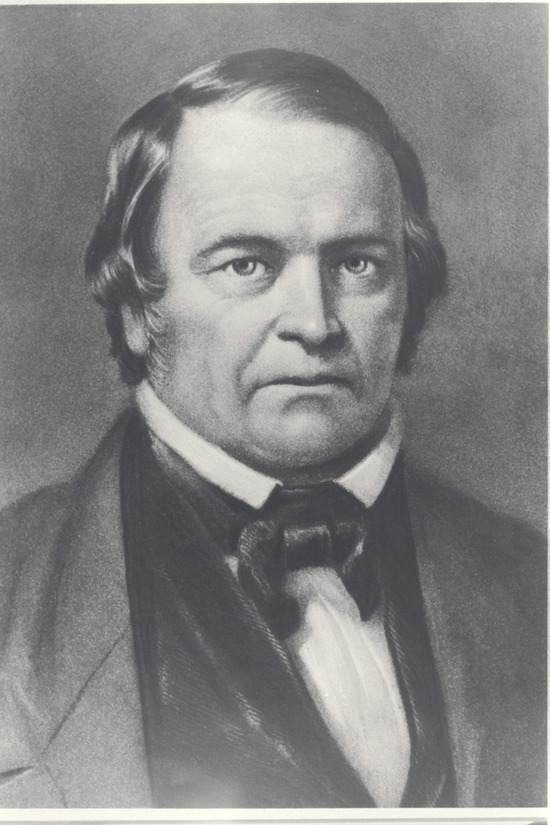
“Courtesy of the Ellen G. White Estate, Inc.”
The sanctuary doctrine has its roots in the aftermath of the Great Disappointment of 1844. The Millerites, followers of William Miller, had concluded Jesus would return on October 22 of that year. Their conclusions came from Daniel 8:14, which says “the sanctuary shall be cleansed” after a prophetic time period (NKJV).
The Millerites, based on popular prophetic interpretations of their time, had assumed that the sanctuary refers to the earth and that it would be cleansed by fire when Jesus returned.9
They were bitterly disappointed when He didn’t come.
But some Millerites didn’t lose hope. They instead went back to studying the Bible to find out where they’d gotten it wrong. Two of those people were Hiram Edson and his friend, Owen R. L. Crosier. When they set out to visit some friends one day who needed some encouragement in the faith, Edson suddenly stopped as they walked through a field.
Right there, the Holy Spirit impressed on him an epiphany that the cleansing of the sanctuary in Daniel 8:14 was not about Jesus coming to the earth. Instead, Jesus had entered the Most Holy Place of the heavenly sanctuary in 1844.10
Encouraged by this, Edson, Crosier, and another friend, Dr. F. B. Hahn, devoted even more effort into Bible study about the sanctuary. They confirmed that 1844 was a special date—just not the date of Jesus’ second advent.
It was the end of one thing and the beginning of another.
The key is in the interpretation of the word “sanctuary” used in Daniel 8.
Studying to understand the Great Disappointment
When early Adventists realized that Daniel 8:14 wasn’t referring to Jesus’ return, they decided to study what “the cleansing of the sanctuary” really meant.
As we pointed out, the Millerites had thought “sanctuary” referred to the earth. And by interpreting the sanctuary as the earth, the only logical explanation for that phrase was Jesus’ return. He’d come back, take His followers to heaven, and cleanse the earth with fire.
After the Great Disappointment, though, Edson and Crosier reviewed these verses and others. What they learned changed their thinking. The cleansing of the sanctuary in Daniel’s vision refers to the cleansing of the heavenly temple.
Just as the priests in ancient Israel symbolically brought the people’s sins into the sanctuary throughout the year, the heavenly sanctuary contains the record of sins forgiven by Jesus’ death on the Cross (Jeremiah 17:1; Malachi 3:16; Revelation 20:12).
Here’s how the apostle Paul describes it in the New Testament:
“According to the law almost everything is purified with blood, and without the shedding of blood there is no forgiveness. Therefore, it was necessary for the copies of the things in the heavens to be purified with these sacrifices, but the heavenly things themselves to be purified with better sacrifices than these [animal sacrifices]” (Hebrews 9:22–23, CSB).
Jesus, our great High Priest, opens the records of human history and looks over the life of each person. He looks at their heart’s intent—not just their actions—and judges whether they truly believed and accepted Him.
Dr. Angel Rodriguez, an associate director of the Biblical Research Institute, describes it this way:
“The investigative judgment signifies that human decisions and actions have a cosmic
impact. What we are, think, and do is preserved indelibly in the heavenly records.
This, far from being a source of stress and fear, should be the very foundation of joy.
What we do, what we become is not lost in the vastness of time and space but is preserved within God’s sanctuary. Every good deed, every prayer, every word of encouragement, every expression of love, is preserved as a witness to the manifold wisdom of God, who is able to transform sinful human beings into new and holy creatures.
Of course, sin is also recorded there. Human weaknesses, rebellions, errors, and failures are preserved there. But because Christ is the believer’s advocate, forgiveness is available and is granted to those who approach God through Him. During the investigative judgment, sins will not be counted against those who remained in a covenant relationship with Christ, because they were charged to Him on the cross. Then those sins will be blotted out, to be remembered no more. The Christlike character of the believer will be fixed for eternity.”11
This judgment, what we call the Investigative Judgment, began in 1844. And it’s still continuing today.
We can’t see it or feel it, but in heaven, Jesus is performing this work (Daniel 7:9-10, 13-14). And thankfully, this judgment doesn’t have to create fear in our hearts because Jesus is our intercessor whose blood covers our sins (1 John 2:1; Hebrews 10:10-14).
Learn why we believe this judgment began in 1844.
What Adventists did with these discoveries
The sanctuary doctrine was important to Adventists because it helped them understand why Jesus hadn’t returned in 1844, and it expanded their understanding of God’s plan to end sin. It showed them that we are living in the time of judgment before Jesus returns.
When the early Advent believers came to these conclusions, Crosier and another Adventist began publishing their findings. They wanted to inform and encourage other Advent believers who were struggling with what happened at the Great Disappointment.
More early Adventist leaders, such as Joseph Bates, studied these ideas on their own and came to the same conclusions.
Adventists began to see how the sanctuary pointed to God’s beautiful plan of salvation and connected many teachings in the Bible, such as the crucifixion, Christ’s ministry in the sanctuary, the Second Coming, the judgment, and The Ten Commandments (which are contained inside the ark of the covenant).
But is the Adventist Church the only one that teaches the sanctuary doctrine?
Is the sanctuary doctrine unique to Adventism?
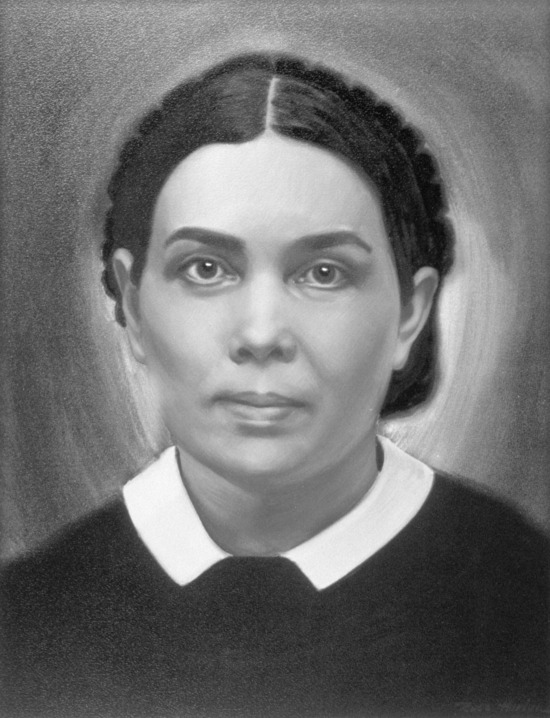
“Courtesy of the Ellen G. White Estate, Inc.”
The ancient Israelite sanctuary is familiar to many Christian denominations, though the specific sanctuary doctrine we’ve explained here is unique to Adventism. The doctrine stems from the Bible studies of early Adventists as they earnestly sought to understand the Great Disappointment. As God blessed and guided their study, they began to put the pieces together, and it eventually became one of our fundamental beliefs.
Later, Ellen G. White—a young woman whom Adventists believe had the spiritual gift of prophecy—received insights from God that helped confirm what the Advent believers had found in the Bible.
One of the visions coincided with what Edson and Crosier had discovered: that Jesus moved from the Holy Place to the Most Holy Place in 1844.12 In another vision in 1847, she saw more detail of the sanctuary in heaven.13
She wrote about this incredible vision:
“After viewing the glory of the holy, Jesus raised the second veil and I passed into the holy of holies. In the holiest I saw an ark; on the top and sides of it was purest gold. On each end of the ark was a lovely cherub, with its wings spread out over it…. Jesus stood by the ark, and as the saints’ prayers came up to Him, the incense in the censer would smoke, and He would offer up their prayers with the smoke of the incense to His Father.”14
This vision put together the pieces of her other visions about the sanctuary. The Holy Spirit worked through her spiritual gift to reassure the Adventists that they had, indeed, come to the right conclusions in their study.
So the sanctuary doctrine was incredibly relevant to Adventists as they sought to unravel the Great Disappointment. But does it have anything to do with us today?
How is the sanctuary doctrine relevant to Christians today?
The sanctuary on earth wasn’t only a lesson book for the ancient Israelites. It still helps us understand God’s plan to save us from sin and shows us what Jesus is doing for us even today.
The sanctuary is entwined with Bible prophecy, showing us that Jesus is in heaven as our intercessor right now, helping us and strengthening us. He’s also doing a special work of cleansing the records of our sin in real time, and then He’ll come back for us at His Second Coming and end sin, evil, and suffering once and for all.
Above all, the sanctuary encourages us that God wants to be with us and is doing everything possible to make that happen—through the sacrifice of Jesus and His work of intercession and judgment.
He is bridging the gap that sin created between us and Him. That way, we can one day live with Him forever in a world of peace and joy.
- “Antitype,” Bible Gateway. [↵]
- Hebrews 10:10,14,19-22; John 14:6; Hebrews 2:11. [↵]
- “What Adventists Believe About Christ’s Ministry in the Heavenly Sanctuary,” General Conference of Seventh-day Adventists. [↵]
- Ibid. [↵]
- “Shewbread,” Britannica. [↵]
- “Symbolism Behind the Golden Lampstand of the Wilderness Tabernacle,” LearnReligions. [↵]
- Psalm 141:1-2; Revelation 5:8; Revelation 8:3-4 [↵]
- Ibid. [↵]
- Holbrook, Frank B., Doctrine of the Sanctuary: A Historical Survey, p. 9. [↵]
- “The Advent Movement Beyond the Great Disappointment,” Lineage. [↵]
- Rodríguez, Ángel Manuel, “The Sanctuary and Its Cleansing,” Adventist Biblical Research, p.18. [↵]
- White, Ellen, Early Writings, p. 54-56. [↵]
- Coon, Roger W., The Great Visions of Ellen G. White, p. 41. [↵]
- White, Ellen, Early Writings, p. 32. [↵]
Related Articles
More Answers
Adventist Beliefs
Learn how the 28 Fundamental Beliefs summarize and describe Seventh-day Adventism. They are not a checklist of requirements; instead they show how Adventists interpret and apply Scripture.
What Do Adventists Believe About the Authority of the Bible?
Learn how one really old book (the Bible) is the sole foundation for all Seventh-day Adventist beliefs.
What Do Adventists Believe About the Mark of the Beast and 666?
It’s a popular topic, especially during tumultuous times. When everything around you feels chaotic, it’s easy to wonder about the end of the world, and topics like the mark of the beast, as mentioned in Revelation 13, can stir up uneasiness.
What Do Adventists Believe About the Atonement?
If you’ve spent much time in the Bible books of Leviticus or Numbers, you might’ve noticed the word atonement.
How Adventists Developed the Sanctuary Doctrine and What It Means
The sanctuary was a building at the center of ancient Israelite society that gives us a small picture of the original sanctuary, God’s throne room in heaven (Hebrews 8:1-2).
What Do Adventists Believe About Faith and Works?
Adventists believe we are saved by faith, which is the belief and trust we have in Jesus to save us from our sins. Jesus, then, enables us to live in harmony with God’s commandments and serve others with love—sometimes referred to as “works.”
Do Seventh-day Adventists Believe in Hell?
Seventh-day Adventists believe that any human being who accepts God’s free gift of salvation through Jesus will be given eternal life. But what about the eternal fate of those who choose not to accept Jesus?
Do Seventh-day Adventists Believe in the Secret Rapture
The secret rapture belief asserts that the followers of Jesus will be suddenly and stealthily “raptured” from earth and taken to heaven. Then, any people left on earth will face a period of great difficulty—before Christ’s second coming actually happens.
What Seventh-day Adventists Believe About Growing in Christ
Christian growth is the experience of allowing Jesus Christ to work in our lives through the Holy Spirit and restore in us the image we were designed for—God’s image of selfless, other-centered love.
What Do Seventh-day Adventists Believe about the New Earth?
Seventh-day Adventist, like other Christians, believe that after the second coming of Christ, God will cleanse our earth by fire and then restore it back to Eden-like perfection.
What Adventists Believe About the Millennium and the End of Sin
As most Christians, Seventh-day Adventists hope for the time when sin and evil will no longer exist. The Bible teaches that God will bring an end to sin after a thousand-year period of time called the millennium.
What Are Seventh-day Adventists Beliefs on Death and the Resurrection?
The thought of dying can seem scary. And the idea of being resurrected—or coming back to life—can seem a little uncomfortable.
What Do Seventh-day Adventists Believe about The Second Coming of Christ?
The second coming of Jesus Christ is an event the Bible prophesies will occur at the end of this world’s history. It’s called His second coming to distinguish it from His first, when Jesus was born to Mary and lived as a human before dying on the Cross.
What Adventists Believe About Jesus’ Ministry in the Heavenly Sanctuary
The ancient Israelite sanctuary had a daily service and a yearly service. Jesus’ death on the Cross and His ministry in the heavenly sanctuary reflect these services.
What do Seventh-day Adventists Believe about Marriage and Family?
The Seventh-day Adventist Church believes God established marriage and the family unit to be blessings to humanity. They make up a relational structure that can reflect the multifaceted nature of God’s love.
What Seventh-day Adventists Believe about Christian Behavior
The patterns of actions and words that make up behavior are central to any type of belief system because they flow from those beliefs. Seventh-day Adventists look to the Bible, with Jesus as the perfect example, for guidance on shaping our daily behavior.
What do Seventh-day Adventists Believe about the Sabbath?
Seventh-day Adventists believe that the biblical Sabbath is a beautiful gift of rest that God gave to us at Creation and that remains valid to this day. Falling on the seventh day of the week—Saturday—it connects us to God in a special way and offers us a weekly opportunity to be physically, mentally, and spiritually refreshed.
What Seventh-day Adventists Believe about Stewardship (and What Does It Mean?)
Love for God and our fellow humans is the overriding principle of the Seventh-day Adventist faith. And we express that love in an overarching way through how we manage the things—material and immaterial—that God has entrusted to us.
What Do Adventists Believe About the Law of God?
Seventh-day Adventists believe that God’s law reflects His character of love (1 John 4:8; Romans 13:10). It is perfectly summarized in the Ten Commandments given to Moses on Mount Sinai, showing us the practical application of loving God and loving other people.
What Do Seventh-day Adventists Believe About the Gift of Prophecy?
Adventists believe the gift of prophecy is a spiritual gift that the Holy Spirit gives to specific individuals to help the church carry out Jesus’ Great Commission (Matthew 28:16–20). Prophecy helps strengthen, encourage, and comfort His people (1 Corinthians 14:3).
What Seventh-day Adventists Believe About Spiritual Gifts in the Bible
Seventh-day Adventists believe that spiritual gifts are talents that the Holy Spirit gives to believers and followers of Jesus Christ. These gifts are different but complementary, and they often equip followers of Christ with the ability to spread the good news about Jesus and encourage its members.
What do Seventh-day Adventists Believe about the Lord’s Supper (Communion)?
Like many Protestant Christians, Seventh-day Adventists believe in the practice commonly called the Lord’s Supper or Holy Communion. They drink grape juice and eat unleavened bread in obedience to Jesus’ direct instructions to do it in remembrance of Him (1 Corinthians 11:24–25).
What do Seventh-day Adventists Believe about Baptism?
Like many Protestant Christians worldwide and throughout history, the Seventh-day Adventist Church believes in baptism, a ceremony in which individuals go under water to publicly demonstrate dying to an old life and beginning a new life in Christ. We baptize people by immersion, as taught and exemplified in the Bible.
What Do Seventh-day Adventists Believe about Unity in Christ?
Seventh-day Adventists believe in biblical unity—the idea of believers in Jesus being united by the truth of the Bible and the common goal of representing God and His love to the world.
What do Seventh-day Adventists Believe about the Remnant and its Mission?
The “remnant” are a group of faithful believers that have existed throughout history and proclaimed God’s truth, love, and plan to save humanity. They “remain” with God even amid persecution and also when it seems everyone else has rebelled against God or compromised their beliefs.
What do Seventh-day Adventists Believe about the Church?
Seventh-day Adventists believe that the idea of the church is an important biblical concept.
What Adventists Believe about The Experience of Salvation?
The Seventh-day Adventist Church believes that salvation is a gift that anyone can receive through faith in Jesus Christ, the Son of God. When we accept His sacrificial death in our place, He saves us from the penalty and power of sin (or evil), which prevents us from experiencing true freedom.
What do Seventh-day Adventists Believe about the Life, Death, and Resurrection of Jesus?
Jesus Christ, a person who lived in first-century Palestine, is the foundation of the Adventist faith. This is because it’s only through the life, death, and resurrection of Jesus that any of us have hope of life beyond the toil, suffering, and death of this world.
What do Seventh-day Adventists Believe about The Great Controversy?
The “Great Controversy” is the phrase Seventh-day Adventists typically use to describe the cosmic spiritual conflict between the forces of good (God) and the forces of evil or sin (Satan/the devil).
Didn’t find your answer? Ask us!
We understand your concern of having questions but not knowing who to ask—we’ve felt it ourselves. When you’re ready to learn more about Adventists, send us a question! We know a thing or two about Adventists.


